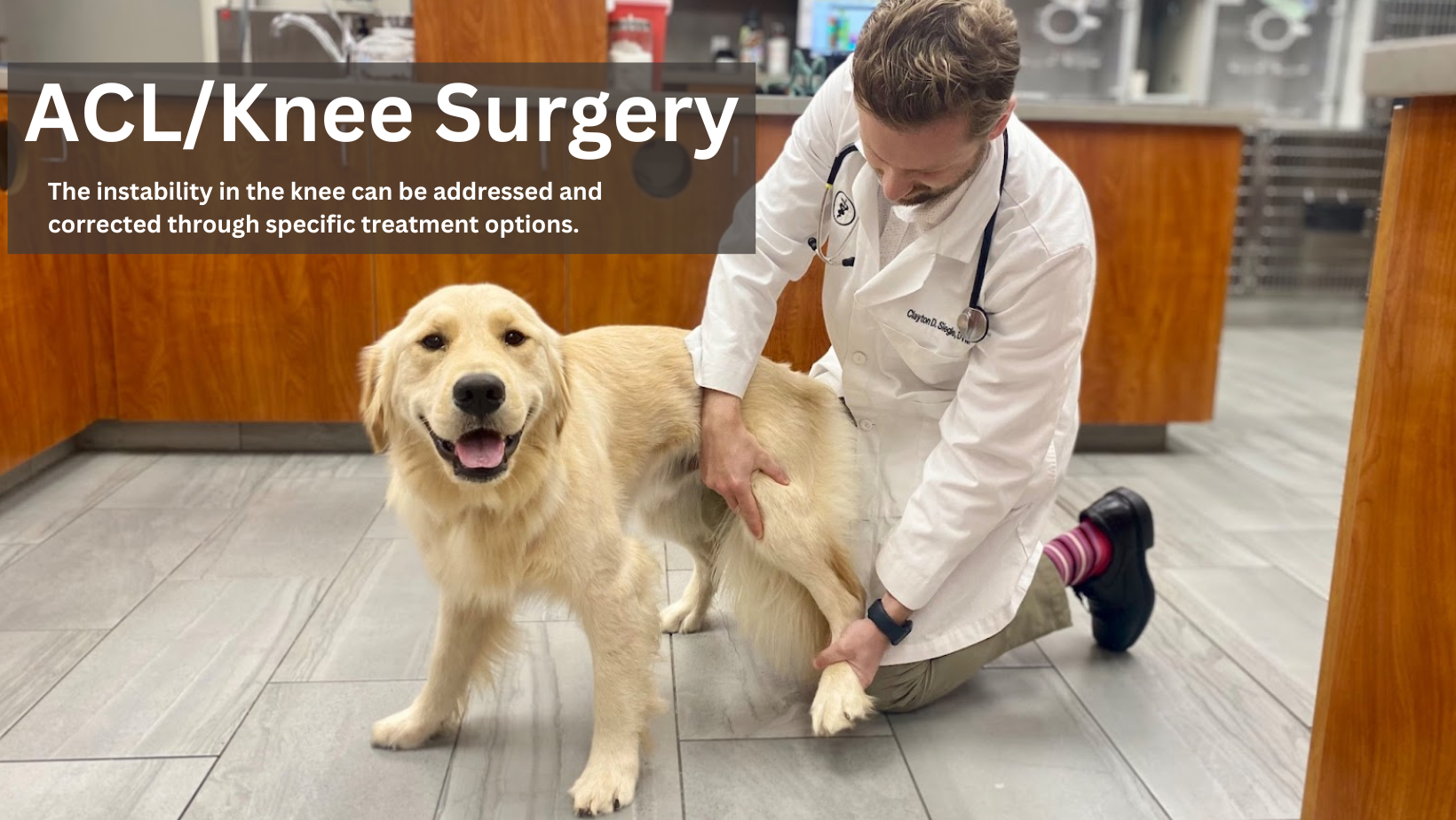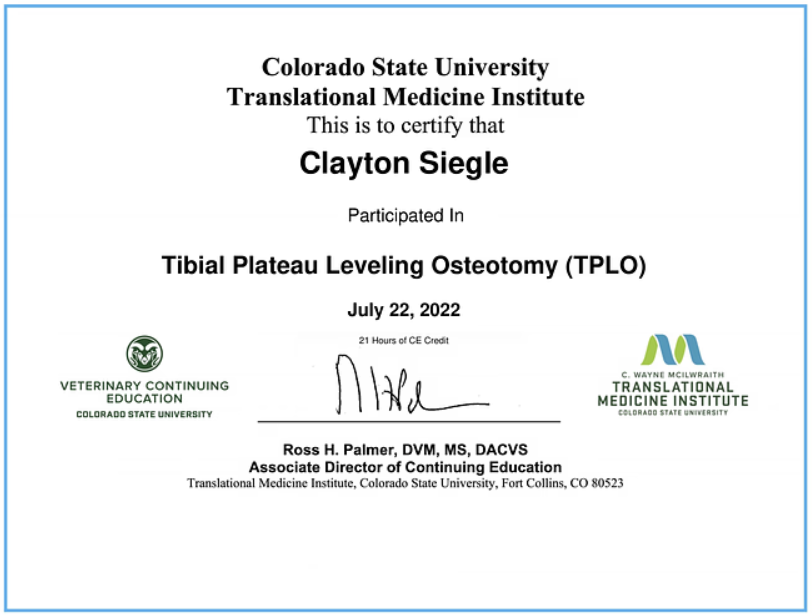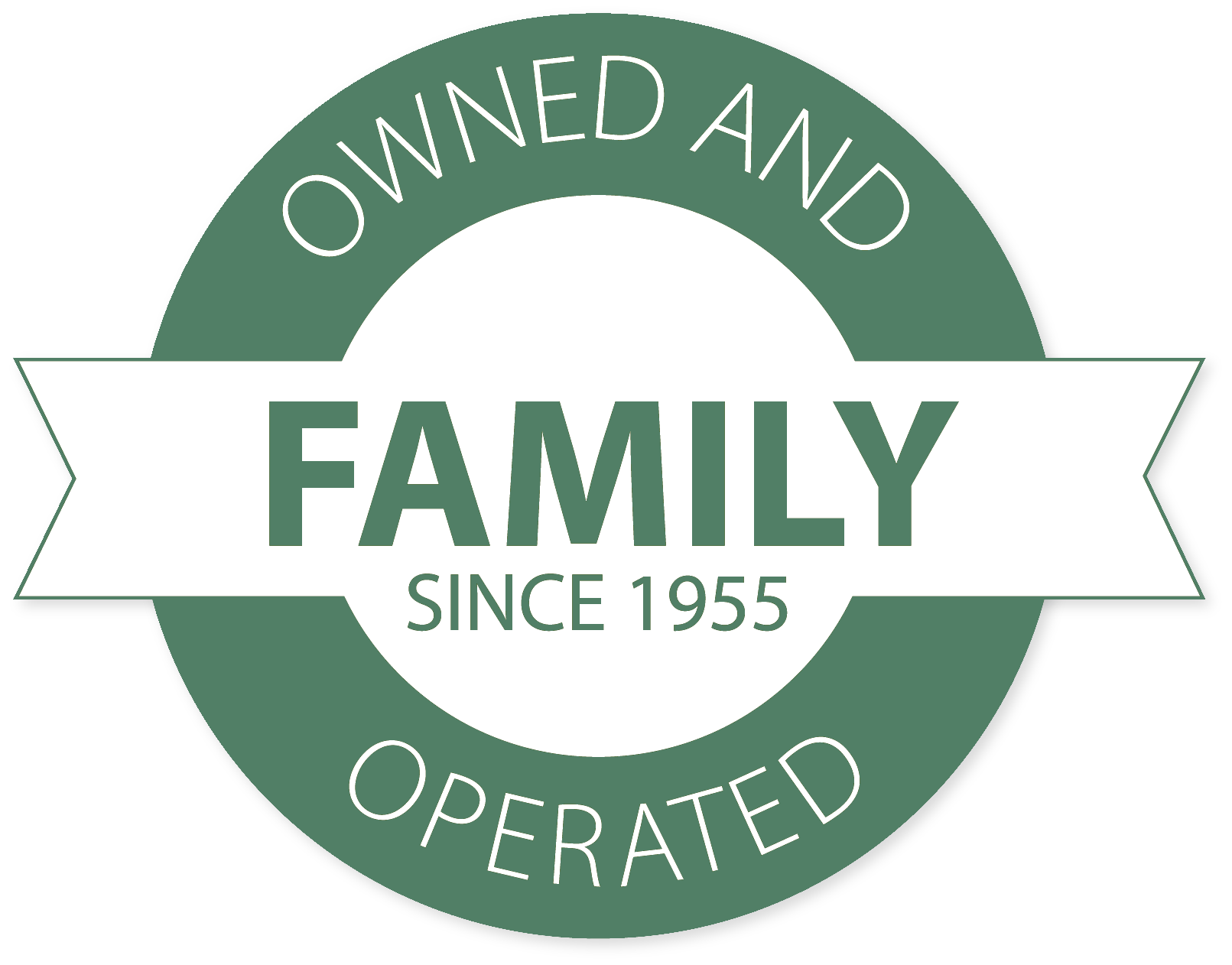
Cranial cruciate ligament tear (equivalent to an ACL in humans) is the most common orthopedic injury for dogs. This can occur either as a full tear or a partial tear. This ligament normally stabilizes the knee and prevents a sliding (or drawer) motion between the two bones of the knee joint. Common consequences to this injury include meniscal tears and osteoarthritis. Most often, surgery is recommended to stabilize the knee and control pain.
There are two surgeries for ACL tears offered here at Cascade Hospital for Animals: Tibial Plateau Leveling Osteotomy and Modified Retinacular Imbrication Technique.
TPLO (AKA Tibial Plauteau Leveling Osteotomy)
-
This technique stabilizes the knee after a cranial cruciate ligament tear by changing the biomechanics of the knee. A curve cut is made in the bone and the top segment is rotated to flatten the tibial plateau. A specialized bone plate is used to hold the segments in place.
-
This technique works for dogs with partial or complete cranial cruciate tears.
-
This surgery can be performed at Cascade for dogs between 30-180 lbs.
-
Recovery time is roughly about 4 months
-
The TPLO has shown to best prevent future arthritis after surgery.
-
Dr. Clayton Siegle has completed advanced training to become certified in this surgical technique.
Lateral Suture (aka Modified Retinacular Imbrication Technique- MRIT)
-
This technique stabilizes the knee by implanting a sterile nylon suture to act as a fake ACL ligament.
-
Generally this technique is best for complete tears
-
MRIT’s are best for smaller breed dogs (under 30 lbs) however it can be performed in larger breed dogs depending on a variety of factors. We recommend discussing with one of our veterinarians if you have questions.
Post-surgery Radiograph with TPLO Plate Implant




